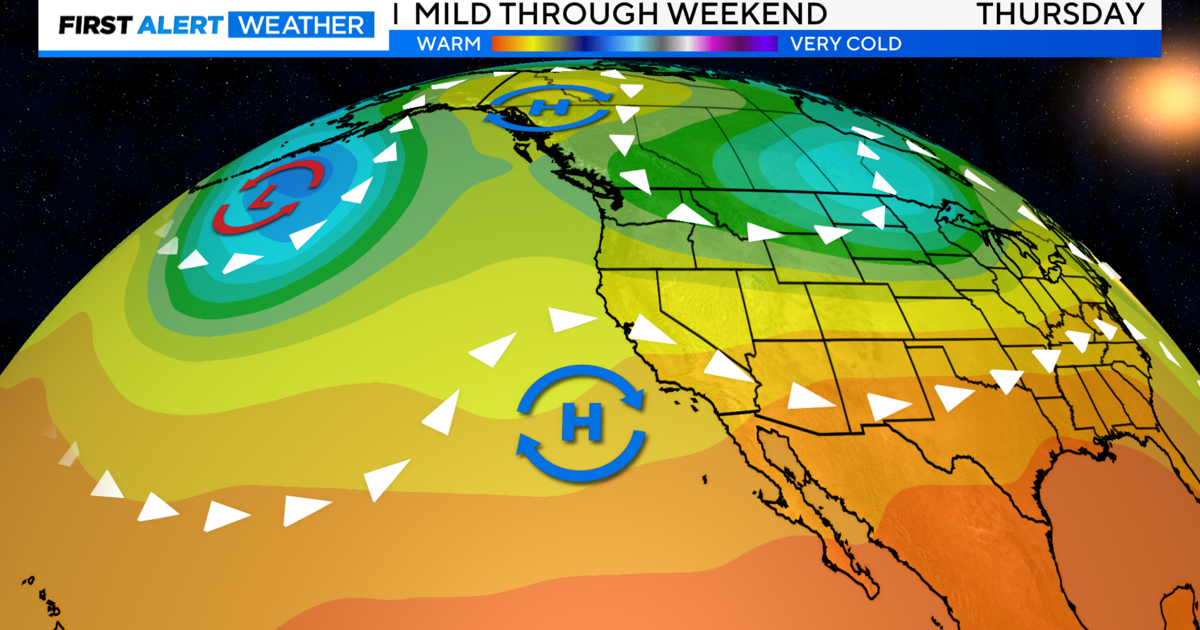California: A State Of Survival Part 1 - A Sinking Feeling In The San Joaquin Valley
LOS BANOS (CBS13) — In a tiny, dusty shed in Los Banos in the sun-soaked, parched San Joaquin Valley, USGS hydrologist Michelle Sneed is measuring a vast problem hidden just beneath the surface.
"Since the '20s or '30s, this area has sunk about 10 feet," she said.
What her calculations show is startling—about 3,000 miles of the land is sinking at some of the fastest rates on record. In some areas, it's dropping by more than a foot a year.
The phenomenon is called subsidence, caused by growers pumping more and more groundwater during California's drought, which is in its fourth year.
"We should be worried. It is a concern. It's expensive. It's impacting farming activities; it's impacting delivery of water," Sneed said.
We didn't have to go far to see the impact of overpumping. The concrete liner of the Delta-Mendota Canal is crumbling in several spots.
"Water can seep behind it, and start eroding the levee that we're standing on here," Sneed said.
Subsidence isn't just cracking canals and leaving wells above ground. The sinking land is buckling roads and damaging bridges. Experts warn repairs could cost taxpayers millions.
A bridge that was built decades ago once allowed people to boat under it. Now the water is level with the road, and the bridge has sunk about a foot in the last couple of years. Before long it will have to be replaced.
Subsidence isn't new. Hydrologists say the land was giving way in the region during the Great Depression and World War II. It was slowed when canals were built. Farmers didn't need to rely on wells for the underground water since there was plentiful surface water.
"It essentially fixed the problem for many years except during droughts," Sneed said.
Now, with California deep into its drought, surface water is dwindling, leaving growers heavily dependent on groundwater. They're drilling deeper and deeper depths.
Scientists say they're sucking far more water out of the ground than what's replaced. While that's true in non-drought years, it's even worse now.
Without the water itself holding the land in place, the underground clay layer is compacted, and the land begins to collapse.
Chase Hurley with the San Luis Canal Company calls a spot in Fresno County ground zero for subsidence.
The Sack Dam was built to divert and push water from the San Joaquin River to his canal, which carries water to farmers as far as 45 miles away.
"It's our only way to get water to 45,000 acres of productive farmland," he said. "It's getting tougher every year."
That's because the dam itself is sinking and not pushing the water as powerfully into the canal, which is also sinking. Canals are built on careful slopes so water flows downhill. Subsidence slows that water when the ground sinks and reduces the flow to farmers.
One fix is a costly option—installing a pumping station to make up for the lost canal slope would run about $15 million for just one spot. Experts say some canals in the San Joaquin Valley have lost 50 percent of their delivery capacity.
"We're actually starting to have to push water uphill, and obviously gravity diversions don't work well going uphill," Hurley said.
So what happens then? It's a vicious cycle. Growers drill more wells, which causes the land to sink even more, slowing the canals even further.
For farmers with permanent crops, it's quite literally a matter of survival. But groundwater pumping has gone largely unregulated and unmonitoredfor decades.
It wasn't until last September that Gov. Jerry Brown signed legislation overhauling the state's management of its groundwater supply. California was the last Western state to regulate its groundwater use.
But those rules won't take effect for years, so Hurley is working with local leaders to come up with a plan.
"We've gotta get a handle on it, and if we don't, my dam and my diversion is gonna need some work, ASAP," he said.
As troubling and expensive as the immediate infrastructure impact may be, hydrologists like Sneed say at least it can be fixed. The most pressing long-term problem caused by subsidence cannot.
The Central Valley Aquifer, which extends some 400 miles, is the state's biggest underground reservoir. But as the ground sinks, it's causing the aquifer's capacity to shrink.
Once that water storage space is gone, it's gone for good.
It's a heavy price to pay for taking too much groundwater during a drought.
"Just like a bank account, you can't do that for too long without paying penalties," Sneed said.



